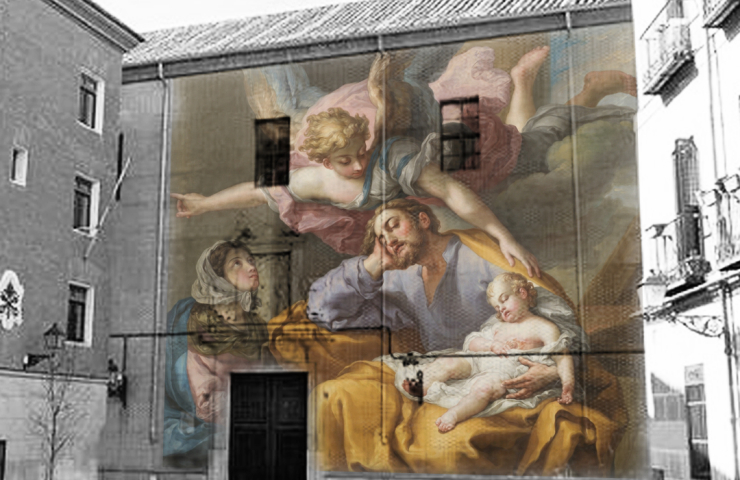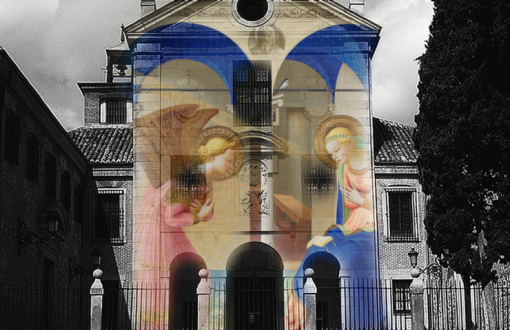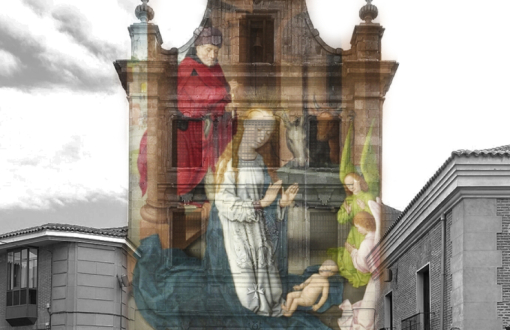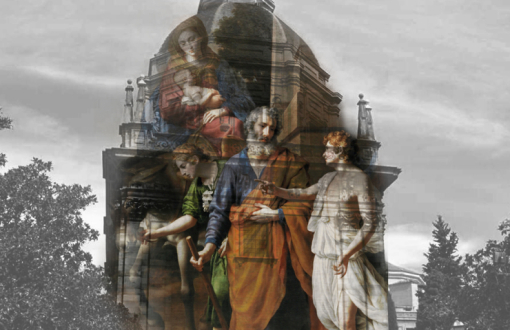3. Monasterio del Corpus Christi
Estado del evento
- Estado: Finished
Detalles del evento
-
Thu 19 Dec - Mon 23 Dec 2024
-
Monasterio del Corpus Christi (Jerónimas 'Carboneras')
Art direction: Paco Azorín
Design and production: Pedro Chamizo
Adoration of the Magi, Maestro de la Sisla
Prado National Museum
This Spanish painter was active around 1500 in the Castilian Hispano-Flemish style within the Avila school. As no signed or documented work survives, he is designated with the conventional name Maestro de la Sisla, taken from the name of the place where he painted the altarpiece on the life of the Virgin: the Hieronymite convent of Santa María de Sisla. The six surviving works, Annunciation, Visitation, Adoration of the Kings, Presentation of Jesus in the Temple, Circumcision and Transitus of the Virgin, were transferred to the Museo del Prado from the Museo de la Trinidad.
The Dream of Saint Joseph, Vicente López Portaña
Prado National Museum
The sleeping Joseph, his elbow propped on the table and the Infant Jesus on his lap, receives the angel’s warning to flee and thus avoid the massacre of children ordered by King Herod. He receives the order to flee to Egypt, taking with him the Child and the Virgin (Matthew 2:13), who is shown lying on the left with her arms crossed, contemplating the heavenly apparition. This is one of López’s most important religious compositions from his early career as a mature artist in Valencia, probably painted as an altar painting or destined for a private oratory. It also shows the Infant Jesus with his Sacred Heart on his chest. This curious invocation did not spread until the middle of the nineteenth century.
The Carboneras del Corpus Christi convent, better known as Convento de las Carboneras, was founded in 1607 by the Countess of Castelar, Beatriz Ramirez de Mendoza, on the site of a palace, for the nuns of the Hieronymite nuns of Corpus Christi. It owes its name to a picture of the Virgin of the Immaculate Conception found in a charcoal shop and donated to the convent. The master builder, Miguel de Soria, directed the design and building of the complex in the first quarter of the seventeenth century. It is considered an example of the early Madrid Baroque. The façade is notable for its simplicity, interrupted only by the doorway. In 1981, it was declared a Cultural Interest Site.
In partnership with:

Categories
Estado del evento
- Estado: Finished
Detalles del evento
-
Thu 19 Dec - Mon 23 Dec 2024
-
Monasterio del Corpus Christi (Jerónimas 'Carboneras')
Accessibility type
 Monasterio del Corpus Christi (Jerónimas 'Carboneras')
Monasterio del Corpus Christi (Jerónimas 'Carboneras')
Details:
- Telephone: 915 483 701
Directions:
- Metro: Ópera (líneas 2 y 5 y Ramal), La Latina (línea 5), Tirso de Molina (línea 1), Sol (líneas 1, 2 y 3).
- Bus: SE712, 31, 50, 65.
- Cercanías Renfe: Sol (líneas C3, C3a, C4, C4a).
- Bicimad: Estaciones 35 (plaza del Cordón) y 9 (plaza de San Miguel, 9).
Centro
Open this map:



